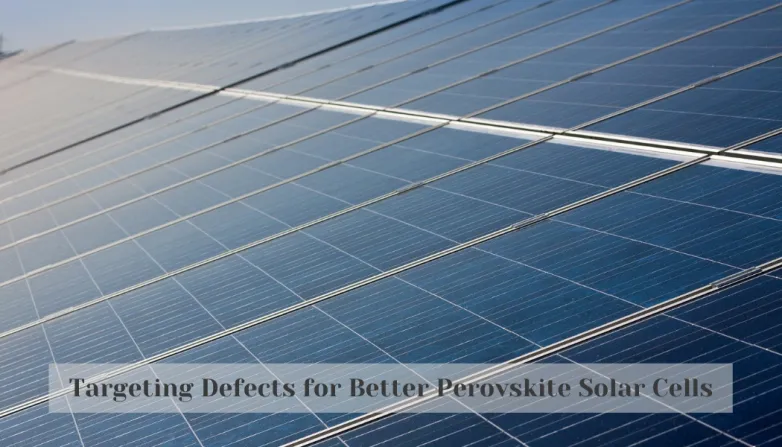Targeting Defects for Better Perovskite Solar Cells
Aug 1, 2023 01:51 PM ET
- Researchers from SARI, Southern University of Science and Technology, and City University of Hong Kong have developed a strategy for modulating the buried interface between perovskite and tin dioxide (SnO2). Through incorporating FOA, record power conversion efficiency of 25.05% is achieved with improved stability.

Researchers from SARI, Southern University of Science and Technology and the City University of Hong Kong have developed a strategy for modulating the buried interface between perovskite and tin dioxide (SnO2). Through incorporating formamidine oxalate (FOA) in a colloidal SnO2-based electron-transporting layer, Fermi level is increased, leading to better energy level alignment and avoiding carrier accumulation. Additionally, FOA modulates crystal growth of upper perovskite films, suppresses oxygen vacancies and tin interstitial defects, and passivates FA+/Pb2+ associated defects. The improved buried interface has enabled record power conversion efficiency of 25.05% with enhanced stability.
How Can Interface Between Perovskite and SnO2 Be Modulated?
- Formamidine oxalate (FOA) was used to increase the Fermi level and improve the energy level alignment, while avoiding carrier accumulation.
- FOA was also used to modulate crystal growth of upper perovskite films, suppress oxygen vacancies and tin interstitial defects, and passivate FA+/Pb2+ associated defects.
- The improved buried interface allowed for record power conversion efficiency of 25.05% with enhanced stability.
- By introducing FOA between the perovskite and SnO2, charge transfer resistance was reduced and the photovoltaic device exhibited better performance.
- The modification of the buried interface between perovskite and SnO2 was achieved by using a colloidal SnO2-based electron-transporting layer.
- The improved buried interface enabled efficient charge separation and improved charge collection.
- The research shows that this technique can be used to improve the efficiency and stability of perovskite solar cell devices.
Also read


